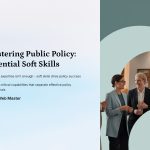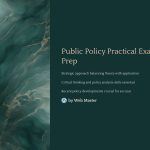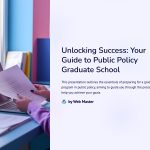 Preparing for the Public Policy Practical Exam requires a strategic approach that balances theoretical knowledge with practical application. This guide provides essential tips, recent trends, and expert insights to help you maximize your performance. As policies evolve, staying updated with recent developments is crucial. We’ll explore the best study techniques, resource recommendations, and time management strategies tailored for this exam.
Preparing for the Public Policy Practical Exam requires a strategic approach that balances theoretical knowledge with practical application. This guide provides essential tips, recent trends, and expert insights to help you maximize your performance. As policies evolve, staying updated with recent developments is crucial. We’ll explore the best study techniques, resource recommendations, and time management strategies tailored for this exam.

Understanding the Exam Structure
Before diving into preparation, it’s vital to understand the exam’s structure. The Public Policy Practical Exam typically consists of case studies, policy analysis, and real-world application questions. Evaluators look for critical thinking, policy interpretation, and problem-solving skills.
- Case Studies: Expect real-world policy issues where you must analyze, propose solutions, and justify your approach.
- Data Analysis: You may need to interpret statistics, charts, or government reports to support policy decisions.
- Policy Drafting: Crafting policy recommendations based on a given scenario is a common task.
- Ethical Considerations: Understanding the ethical dimensions of policy-making is essential.
Familiarizing yourself with past papers and sample questions will provide insights into what to expect.

Essential Study Materials & Resources
Using the right study materials significantly impacts your preparation. Here are the top resources you should consider:
- Government Policy Documents: Reviewing official documents provides insights into current policies and frameworks.
- Academic Journals & Research Papers: Peer-reviewed articles help in understanding theoretical foundations and contemporary debates.
- Case Study Compilations: Books and online resources featuring case studies offer valuable real-world applications.
- MOOCs & Online Courses: Platforms like Coursera, edX, and Khan Academy provide courses on public policy.
- Professional Associations: Engaging with organizations like the American Public Policy Association can provide networking and learning opportunities.

Effective Study Techniques
Memorizing policies is not enough—you must develop critical thinking and analytical skills. Here are effective strategies:
- Active Reading: Summarize key points, annotate documents, and connect theories with real-world examples.
- Mind Maps & Flowcharts: Visual aids help structure policy relationships and decision-making frameworks.
- Mock Exams & Practice Questions: Simulating exam conditions enhances recall and improves answer structuring.
- Group Discussions & Study Groups: Engaging in policy debates strengthens argumentation skills.
- Teaching Method: Explaining concepts to others reinforces understanding.

Time Management & Exam Strategies
Balancing preparation time is crucial. Consider these time management tips:
- Create a Study Schedule: Allocate time for different topics, ensuring comprehensive coverage.
- Prioritize Weak Areas: Focus on topics where you struggle the most.
- Use the Pomodoro Technique: Study in focused intervals to enhance concentration.
- Simulate Exam Conditions: Practice writing answers within the allotted time frame.
During the exam:
- Read questions carefully and identify key action words.
- Structure answers using the PEEL method (Point, Evidence, Explanation, Link).
- Manage time wisely—allocate appropriate minutes per question.
Common Mistakes to Avoid
Avoid these pitfalls to maximize your performance:
- Ignoring Policy Updates: Public policy is dynamic; staying current is vital.
- Lack of Critical Analysis: Answers should demonstrate depth, not just rote memorization.
- Poor Time Allocation: Spending too long on one section can hurt overall performance.
- Failure to Justify Arguments: Always support your answers with evidence and real-world examples.

Final Preparation Checklist
As the exam approaches, follow this checklist:
✅ Review official government policy documents
✅ Practice past exam papers and sample questions
✅ Stay updated on recent policy changes
✅ Join discussion forums and professional networks
✅ Develop structured, well-supported responses
✅ Simulate exam conditions with timed practice
By following these strategies, you can approach the Public Policy Practical Exam with confidence and maximize your chances of success.
*Capturing unauthorized images is prohibited*






